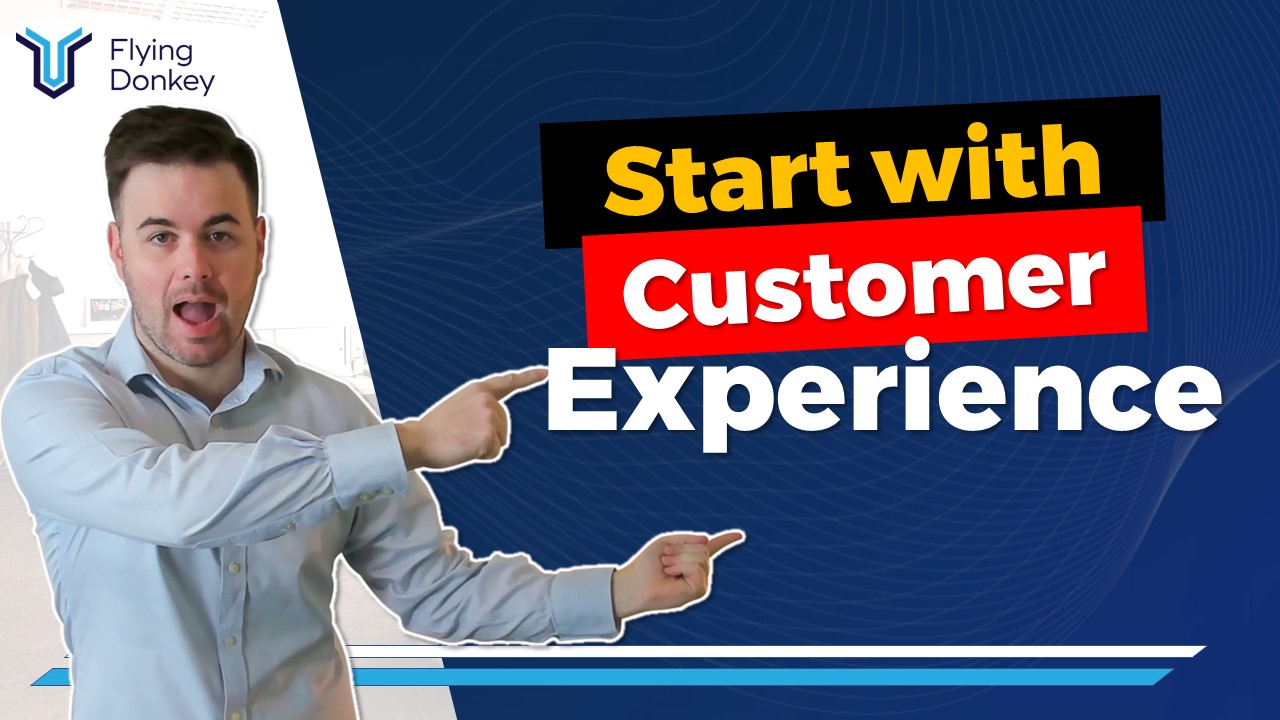I’ve produced nearly 100 videos on Flying Donkey’s YouTube channel. And I’ve never featured any popular videos from other prominent people from around the world. However, that’s going to change today.
In this article, we’re discussing one of the most popular quotes from Steve Jobs. Nearly everyone around the world knows him as the creator of the iPhone and Apple’s CEO. He’s also some sort of a cult hero in the space, so let’s talk about one of the most popular lessons from one of the most successful men in the world.
Jobs: Start With The Customer Experience
In 1997 at Apple’s Worldwide Developers Conference, Steve Jobs was answering questions for developers.
“You can please some people some of the time,” he said, “but you’ve got to start with the customer experience and work backwards to the technology.”
According to him, we can’t start with the technology and then just try to figure out where to sell it. He added:
“As we have tried to come up with a strategy and a vision for Apple, it started with: what incredible benefits can we give to the customer? Where can we take the customer? Not starting with: Let’s sit down with the engineers and figure out what awesome technology we have and how are we going to market that.”
The key sentence here is: start with the customer experience.
This is an excellent lesson from Steve Jobs, and it’s more potent than ever.
Take a look at blockchain and AI. These are truly interesting and unique technologies. They have great applications in the real world.
However, people created them first before starting with an actual problem. These technologies are cool in some demonstrations… but what are they actually solving?
User Personas: Why They Don’t Always Work
When determining problems to solve, the usual approach is to have user personas.
Take a look at the image below:

These are two highly similar people, and they have the same user persona on paper. When we’re trying to solve problems and we see such information, it’s easy to believe that such people will have the same problems.
Now let’s see who they are:

See the difference?
While these two people have extremely similar attributes, the problems they have in life are completely different.
This makes a great argument for not using user personas when drilling down into customer problems.
Another great illustration of this is a LinkedIn post by Matt Lerner:

The first one comes back to user personas — they tell you about the customer’s status, where she’s from, how much she earns, and her other attributes.
The second one’s better. You can see actual problems, so you can easily go and find a solution for the customer. So…

What you want to hear when talking to your clients is the problems they have. You don’t want to project any solutions or technologies to them before you hear their problems.
IT Development: A Problem-Solving Game
IT development is a problem-solving game where you want to know the problem to solve it. Once you have the problem and work out a solution, you bring in the technology and take that solution to the next level.

Many people talk to me about their technology. Even worse, some people launch businesses only with a solution without knowing what the problem is. And that’s because they sometimes do user personas and try to guess problems from there.
But just like what Steve Jobs said: you have to start with the customer experience.
That’s the best thing you can do whether you’re a startup or a large enterprise. Figure out your customers’ problems, and solve them.
Don’t give them something you only think they want. Don’t give them a technology you think they want. Start with a problem, and give them a solution. Once you do that, a lot of things fall into place. Sales and marketing will be far easier, and you can price your product at a point where people will buy it because they see value in it. Your business will go from strength to strength.
The Bottom Line
Overall, what Steve Jobs said decades ago is a tried and true method of business that applies to software development today as it always has. And I hope you’re seeing what your clients’ problems are — make sure you’re solving them and not just providing a technology to use.





